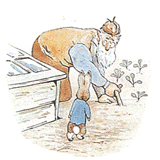http://www.asyura2.com/17/ban7/msg/198.html
| Tweet |
(回答先: アルトゥーロ・トスカニーニ 名演集 投稿者 中川隆 日時 2017 年 8 月 03 日 20:04:37)

ヘルベルト・フォン・カラヤン(Herbert von Karajan, 1908年4月5日 - 1989年7月16日)
シェーンベルク
schoenberg Verklärte Nacht ( Full ) - Karajan - YouTube
https://www.youtube.com/watch?v=U7a36rTZdX8
Dehmel's poem describes a man and a woman walking through a dark forest on a moonlit night, wherein the woman shares a dark secret with her new lover: she bears the child of another man.
The stages of Dehmel's poem are reflected throughout the composition, beginning with the sadness of the woman's confession, a neutral interlude wherein the man reflects upon the confession, and a finale which reflects the man's bright acceptance (and forgiveness) of the woman:
O sieh, wie klar das Weltall schimmert!
Es ist ein Glanz um Alles her (see how brightly the universe gleams!
There is a radiance on everything)
___
SCHOENBERG, 'Verklärte Nacht' (Transfigured Night) H. von Karajan . LIVE - YouTube
https://www.youtube.com/watch?v=Naj9vtKXfjU
[String Orchestra Arr. from String Sextet, Op.4]
1. Grave
2. Molto rallentando
3. Pesante - Grave
4. Adagio
5. Adagio (Molto tranquillo)
Berlin Philharmonic Orchestra
Direction: Herbert von Karajan
"Verklärte Nacht ('Transfigured Night') was inspired by a mystical Poem by Richard Dehmel. In cold, moonlit woods, a woman confesses to her lover that she carries the child of another man she never loved but to whom she yielded for fulfillment. After a long pause of brooding meditation, he resolves that their love will make the child their own. They embrace and walk on, the formerly barren night transformed by hope and devotion. Such cloying sentimentality is rather hard to take seriously nowadays, and indeed Schoenberg later called the poem "repulsive" and urged appreciation of his work as pure Music, portraying nature and expressing human emotion rather than depicting the specific action of the text."
Rejected by the "cultural gatekeepers" of the time for its bold harmonies and "forbidden chords," Verklärte Nacht sounds far more comfortable and comforting to modern ears. Structured as a long arch from the cold despair of D minor to the resolve of D major, it's colored by intense chromaticism, full of accidentals and often traveling the long way around the circle of fifths (once switching abruptly from six sharps to five flats).
Schoenberg was especially proud of an extreme transition (at measures 225-230) from E-flat minor to D major, linked only by a sustained B-flat. Its first performance came in 1903 by Arnold Rosé, leader of the Vienna Philharmonic, whose rehearsals attracted the admiration of its conductor Gustav Mahler, who, to his credit, championed Schoenberg in his few remaining years, even though he admitted that he didn't fully understand the music. (Schoenberg, in turn, admired Mahler for baring his soul in his Art.)
In one sense, though, Verklärte Nacht clearly was innovative, as it is generally credited as the first programmatic chamber music, extending Liszt and Strauss's orchestral tone poems into a more intimate realm. (There had been isolated instances of extra-textual allusions, such as Beethoven's inscription of "Must it be? It must be" in his probing Final Quartet, or the depiction of sudden deafness in the finale of Smetana's Quartet, but never before had a complete chamber work sought to tell a story.)
The full depth and majesty of the orchestration is revealed in the 30-minute recording by Herbert von Karajan and the Berlin Philharmonic . Yet, despite the frequent markings in the score urging "warmth," feeling seems wholly absent, leaving an overall impression of cold beauty, an aura perhaps appropriate to the objectivity of Dehmel's Poem."
|
|
|
|
投稿コメント全ログ コメント即時配信 スレ建て依頼 削除コメント確認方法
|
|
 スパムメールの中から見つけ出すためにメールのタイトルには必ず「阿修羅さんへ」と記述してください。
スパムメールの中から見つけ出すためにメールのタイトルには必ず「阿修羅さんへ」と記述してください。すべてのページの引用、転載、リンクを許可します。確認メールは不要です。引用元リンクを表示してください。